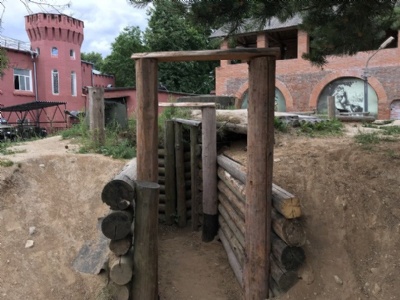Smolensk
Smolensk lies about 400 kilometres west of Moscow and has throughout history been a gateway for invading armies heading for Moscow. After the Germans invaded the Soviet Union on 22 june 1941, they advanced rapidly and reached the area around Smolensk on 10 July. By then, the Germans had already advanced about 500 kilometres since the invasion began. At Smolensk, the Soviet Red Army had assembled three armies giving the germans hard timer breaking through. This first battle of Smolensk lasted for two months and resulted in the Red Army suffering enormous losses in both men and material. But it also resulted a delay of the German advance towards Moscow, which gave valuable time for the Red Army to prepare the defense of Moscow.
The Second battle of Smolensk took place between 7 August and 2 October 1943 and aimed to push the germans out of the area around Smolensk and Bryansk which had been occupied by the germans since the first battle. The Soviet offensive was called operation Suvorov and despite fierce resistance from the germans, the Soviet red army succeeded in gradually pushing back the germans. Almost at the same time, an offensive was also launched around Dniepr to the south, which perhaps from a military perspective was strategically more important for both counterparts The Fighting around Smolensk meant that the Germans could not free up resources to fight back the Red Army’s goal to cross the river Dniepr. The military superiority of the Red Army in both men and material contributed not only to their victory at Smolensk, but also their crossing over Dniepr which gave them an important bridgehead for further offensives west.
Current status: Museum/monument (2019).
Location: 54°46'45.02"N 32°02'50.62"E (museum).
Get there: Walk from central Smolensk
Follow up in books: Bellamy, Chris: Absolute War: Soviet Russia in the Second World War (2008).









Smolensk is one of thirteen cities in the former Soviet Union given the title award, Hero City. An honorable title given to cities distinguished by heroic resistance to the German invaders during the Second World War. Smolensk received the title as late as 1985 (along with Murmansk) and just as in other Hero cities, it’s noticeable. There are a number of monuments and at the fortress there is a small interesting museum about the Great Patriotic War, but unfortunality only in Russian. In 1812 Napoleon and his Grande Army conquered Smolensk only to find it devastated by the retreating Russians. This meant that Napoleon could not supply his army for the advance towards Moscow. Something that in the long run probably weakened his army.